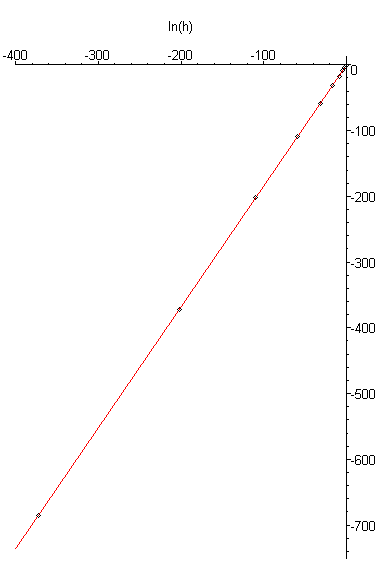The error analysis for Müller's method is beyond the scope of this course, but it can be shown to be O(hp) where p ≈ 1.839286755. This rate of convergence is faster than the secant method but slower than Newton's method.
It can be shown that the power p is the real root of the cubic x3 − x3 − x − 1, that is, p = (a + 4/a + 1)/3 where a = (19 + 3√33)1/3.
Example
To demonstrate this, we will find the root of f(x) = x − x3/3 starting with the three points x0 = 1, x1 = 0.75, x2 = 0.5 and iterate to find:
|
1.0 7.5e-1 5.0e-1 8.4560e-2 9.1422e-3 1.2683e-4 3.2675e-8 1.2629e-14 1.7447e-26 2.3999e-48 1.7626e-88 2.4601e-162 3.4688e-298 |
Because again the root is at the origin, the approximation equals the error, and thus, if we find the best fitting least-squares line through the points (ln(hk), ln(hk + 1)) for k = 0, ..., 12, we get -0.45559 + 1.83936h. The points and the best fitting least-squares line are shown in Figure 1.

Figure 1. The points (ln(hk), ln(hk + 1)) and the best fitting least-squares line.
Again, an example is not a proof, but it supports and demonstrates the propostion.
Copyright ©2005 by Douglas Wilhelm Harder. All rights reserved.


